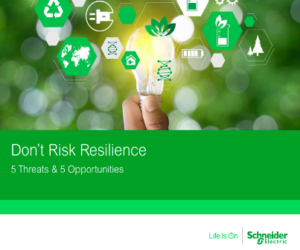 Organisations need mechanisms in place to ensure grid reliability and resilience.
Organisations need mechanisms in place to ensure grid reliability and resilience.
In Europe, for example, energy infrastructure is made up of small, isolated national networks with limited connection, meaning geopolitical or commercial uncertainty can put entire nations at risk of shortages and blackouts. And in the U.S., outdated electrical infrastructure has been responsible for nearly $27 billion in annual corporate losses.
The risk of physical infrastructure failure is a growing concern for businesses and can result from a variety of sources, including:
- Weather-related outages. The Electric Infrastructure Safety Council lists extreme weather, on the rise in the U.K. and abroad, as a “Black Sky Hazard” capable of taking the grid down for a prolonged time.
- Ageing infrastructure. Voltage sags, swells and harmonics can be carried in from weak grids, resulting in intermittent supply disruptions and poor power quality.
Regardless of geography, unexpected power disruptions or poor power quality (illustrated nicely here) can generate unplanned expense, and create a ripple across the supply chain.
What’s the solution?
Explore opportunities to reduce reliance on the grid and improve control of power supplies.
- Consider microgrids, one of the most flexible solutions. These can be off-grid or grid-connected, facility or community-owned. Grid-connected microgrids can ‘island’ and still deliver energy from combined heat and power plants, batteries, etc.
- Onsite renewables and other distributed energy resources (DERs) can be reliable, grid-friendly and dispatchable.
Though critical in today’s changing energy landscape, investments in infrastructure security are just that — an investment. Access to capital can be challenging. Innovative solutions such as performance contracts, power purchase agreements and proxy revenue swaps are increasingly customisable, and offer greater flexibility to address project needs and costs.
To learn more about infrastructure issues, and other energy and sustainability risks, download Don’t Risk Resilience: 5 Opportunities & 5 Threats.



